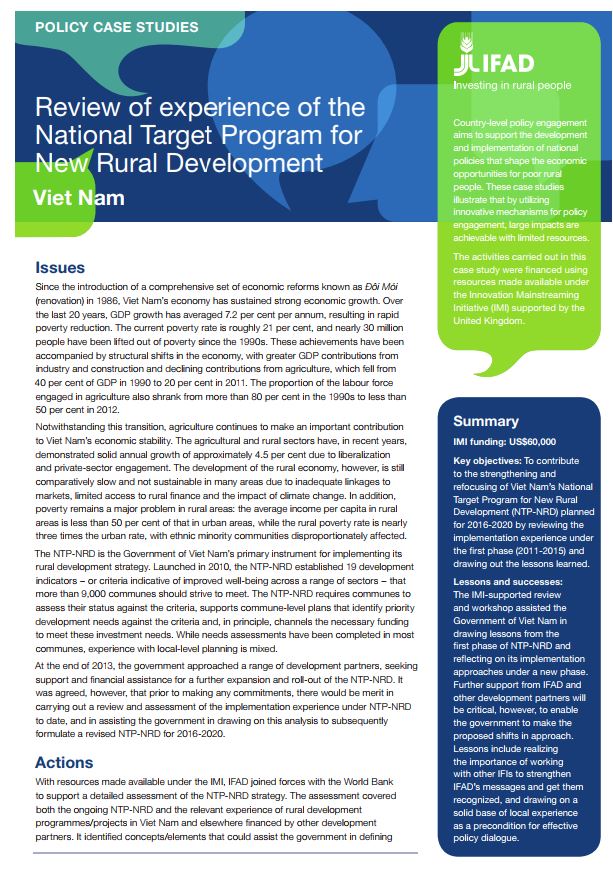Policy case study: Viet Nam – Review of experience of the National Target Program for new rural development
Policy case study: Viet Nam – Review of experience of the National Target Program for new rural development
Since the introduction of a comprehensive set of economic reforms known as Đôi Mói (renovation) in 1986, Viet Nam’s economy has sustained strong economic growth. Over the last 20 years, GDP growth has averaged 7.2 per cent per annum, resulting in rapid poverty reduction. The current poverty rate is roughly 21 per cent, and nearly 30 million people have been lifted out of poverty since the 1990s. These achievements have been accompanied by structural shifts in the economy, with greater GDP contributions from industry and construction and declining contributions from agriculture, which fell from 40 per cent of GDP in 1990 to 20 per cent in 2011. The proportion of the labour force engaged in agriculture also shrank from more than 80 per cent in the 1990s to less than 50 per cent in 2012.
Notwithstanding this transition, agriculture continues to make an important contribution to Viet Nam’s economic stability. The agricultural and rural sectors have, in recent years, demonstrated solid annual growth of approximately 4.5 per cent due to liberalization and private-sector engagement. The development of the rural economy, however, is still comparatively slow and not sustainable in many areas due to inadequate linkages to markets, limited access to rural finance and the impact of climate change.
